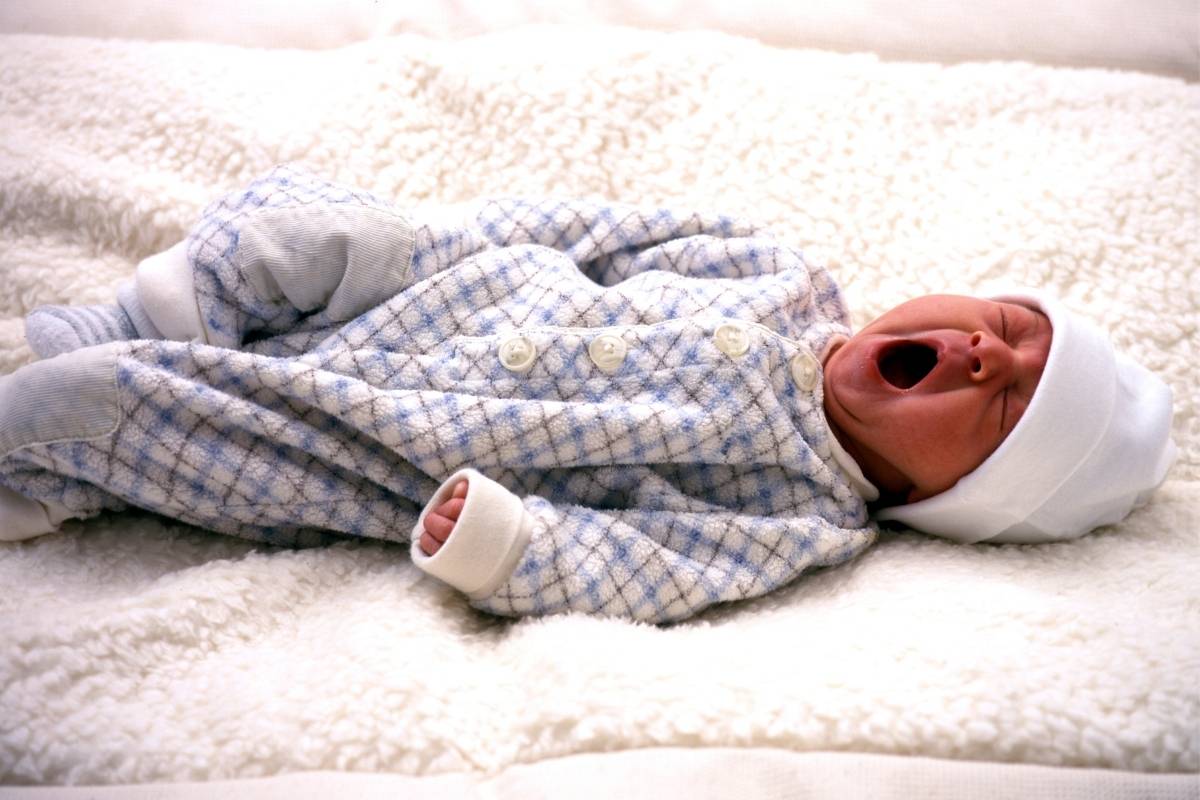A good night’s sleep is essential for a healthy and happy baby. As a parent, you want to give your child the best form of care available. Sleeping bags are one of the most popular sleeping aids available today and you should know if they are worth the hype.
Sleeping bags are worth the hype and their weight in gold. They provide safe and comfortable sleep for your baby. They replace blankets and loose sheets and eliminate the risks of Sudden Infant Death Syndrome (SIDS) that blankets bring.

What Are Baby Sleeping Bags?
Baby sleeping bags are simply blankets that your baby can wear. A sleeping bag comprises two armholes, a neck, and domes or zip that enable easy wearing and removal. Other names for baby sleeping bags are sleep sacks or gro bags.
Most newborns barely sleep at night. With their feeding demands and fussy cries, neither you nor your baby is getting enough nighttime sleep. Thus, you will want to use every tool available to ensure a quiet and comfortable sleep for your baby.
Instead of blankets or a cover sheet, you can use baby sleeping bags. They work for both naptimes and overnight sleep. Whether your baby sleeps in a cot, bed, or bassinet, you can wrap them in a baby sleeping bag. These sleeping bags are meant to be used without blankets or covers.
When your baby starts wriggling more and getting out of his swaddles, it is time to pop out the baby sleeping bag.
Are Baby Sleeping Bags Worth It?
Before baby sleeping bags became popular, loose sheets and blankets were the major ways to keep babies warm in the cold. When The American Academy of Pediatricians (AAP) brought up new guidelines on safe sleep, these sleep sacks came to the forefront.
According to the AAP, babies’ cribs and cots should be free from loose beddings or blankets, or toys. This is a way to reduce the risk of overheating associated with SIDS. The risk of SIDS is highest during your baby’s first 12 months of life (especially the first 3 months.)
Although there has been a lot of chatter about how sleep sacks reduce the risk of overheating and hence SIDS, there is no research that confirms this theory. Regardless, there are many benefits that support the use of sleep sacks, and they include;
- Sheets or blankets do not cover your baby’s face as they sleep.
- Your infant maintains a steady temperature throughout the night.
- There will be no kicking of blankets or jerking awake. Their sleep cycle is not interrupted.
- Many babies sleep better in a sleeping bag, and your baby could be one of them.
- Your mobile baby is free to move about their bassinet or cot, and they settle alone without you needing to tuck them back in.
- Once the sleeping back becomes part of your sleeping routine, anyone can put your baby to bed anywhere because they are used to it. It becomes a familiar way for your baby to sleep.
- It is good to set routines for babies. Putting them in a sleep sack can become a nudge/cue for them to go to sleep both at night and naptime.
- It eliminates the risk of your baby’s feet getting stuck in between the bars of a crib.
Are Swaddles Different From Baby Sleeping Bags?
After the pain of labor and childbirth, the nurses bring your bundle of joy wrapped in snug wraps. Swaddling mimics the environment of the womb and gives your baby a sense of familiarity and comfort. It helps newborns sleep better.
Besides the familiarity it gives, swaddling also helps manage the moro/startle reflex babies exhibit early in life. This reflex can wake your baby up and you would have to struggle with settling them again. Babies usually outgrow it between 5 to 7 months.
The key differences between swaddling and sleeping bags are in the amount of mobility they give, and their duration of use. Sleep sack provides room for your baby’s arms and legs to move while swaddling wraps your baby’s limbs snugly and leaves little to no room for mobility.
Swaddling is only for newborns and functions only until your baby begins to roll over without help. On the contrary, you can use sleep bags from day one until 3 years of age.
When you swaddle your baby, don’t do it too tightly to decrease the risk of hip dysplasia in your baby.
How Do You Use Baby Sleeping Bags?
Baby sleeping bags are easy to use, and they come in unique designs and sizes. Most times, you may have to buy two different sleeping bags. This is because there are different bags for different seasons/temperatures.
There are sleeping bags with 2-in-1 functions that save you from having to buy two bags. An example is the Babasac baby sleeping bag. On warmer nights, you can take out the inner layer and have your baby feeling cozy.
Choose a tog based on your local seasons and climate. Also, before putting your baby in for the night, check your room temperature. Stay away from sleeping bags that come with hoods. They may increase the very risk of SIDS you are trying to avoid by using a sleeping bag.
Many baby sleeping sacks suggest suitable garments to be worn underneath the sack (long sleeve pyjamas of a simple vest.) This helps if you are ever confused about adding or removing layers to your baby within the sack.
The easy designs of these sleeping bags mean you don’t have to struggle with putting them on or taking them off. All you have to do is place the sleeping bag on a flat surface (couch or crib), put your baby in it, and zip them up.
They can zip in front or at the sides, around the bottom, or clip at the top. If your baby needs a lot of nighttime changes, you can quickly get one that zips at the base; you do a diaper change without completely removing the sleeping bag.
What Kind Of Baby Sleeping Bag Should I Buy?
With the many choices available, it might be hard for you to decide. Here are some guidelines you can follow:
- Buy a room thermometer. Your room temperature will determine, to a large extent, the bag you use per night. It is indispensable.
- Choose the right fit for your baby according to age, height, and weight. You don’t want a bag big enough for your baby to slip into and get stuck. Most of the bags have a minimum weight, so check if your newborn is too small for what you can see.
- Do not choose a size for your baby to grow into. Each size is made to fit babies of a certain age and size. Choose what fits them now and change the bags as they grow. The cost is definitely worth it.
- Sleeping bags made from natural materials are breathable and can aid your baby’s sleep. Such fibres include organic cotton, bamboo, or natural cotton. Synthetic fibres, like polyester, do not have the moisture dispersing qualities of natural fibres and can lead to fluctuating temperatures throughout the night.
- Lastly, choose a sleeping bag based on its TOG rating. A great brand that values TOG ratings alot is Ergopouch. They have different sleeping bags with a variety of TOG ratings.
What Is TOG Rating?
TOG stands for “overall thermal grading”, and it denotes how warm the clothing material is and how much heat it can hold. The higher the rating, the thicker and warmer the sleeping bag is.
You interpret the TOG rating using room temperature. A general guide to follow is:
24 degrees Celsius or more—0.5 TOG This is the sleeping sack for summer nights, hot rooms, and warm climates.
21–23 degrees Celsius—1 TOG. a sack with this rating is ideal for slightly cooler weather. When an extra layer of warmth is needed, switch to this sleeping bag.
18 – 20 degrees Celsius – 2.5 TOG
16–17 degrees Celsius—3.5 TOG or 2.5 TOG plus one blanket. This is the warmest of all sleeping bags, and it is perfect for cold winter nights.
Like most babies, yours might be ready to do without a sleeping bag right after a first birthday. At this age, they are already crawling and even walking. If they want to crawl into your bed in the middle of the night, a sleeping bag does not help their mission.
Some parents maintain sleeping bags far into toddlerhood. Ultimately, you decide on a time that works for you and your baby. Always remember to select a TOG based on your room temperature every night.
A baby sleeping bag is worth the safety and comfort it brings. You can use it for a long time, and it is perfect as long as you have the right fit for your baby. Not only does your baby sleep better, but you also get to sleep well.

